
漢德百科全書 | 汉德百科全书

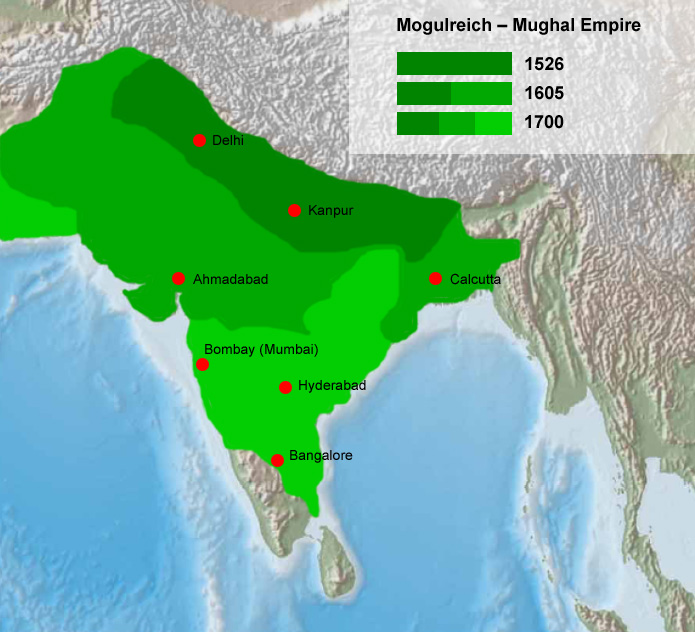
Das Mogulreich war ein von 1526 bis 1858 auf dem indischen Subkontinent bestehender Staat. Das Kernland des Reiches lag in der nordindischen Indus-Ganges-Ebene um die Städte Delhi, Agra und Lahore. Auf dem Höhepunkt seiner Macht im 17. Jahrhundert umfasste das Mogulreich fast den gesamten Subkontinent und Teile des heutigen Afghanistans. Auf 3,2 Mio. Quadratkilometern lebten zwischen 100 und 150 Mio. Menschen.[1] Für das Jahr 1700 wurde sein Anteil an der Weltbevölkerung auf ca. 29 Prozent geschätzt.[2]
Die muslimischen Herrscher werden heute im Deutschen als „Mogul“, „Großmogul“ oder „Mogulkaiser“ bezeichnet. Ähnliche Bezeichnungen finden sich auch in anderen, vor allem westlichen Sprachen. In der Staats- und Hofsprache Persisch, das die ursprüngliche Muttersprache der Moguln – das Tschagataische, eine osttürkische Sprache – abgelöst hatte, lautete der Herrschertitel پادشاه pād(e)šāh. Er war dem Titel eines Kaisers vergleichbar.[3]
Der erste Großmogul Babur (reg. 1526–1530), ein aus Zentralasien stammender Fürst der Timuriden-Dynastie,[4] eroberte, ausgehend vom Gebiet der heutigen Staaten Usbekistan und Afghanistan, das Sultanat von Delhi. Als bedeutendster Mogulherrscher gilt Akbar I. (reg. 1556–1605), der das Reich militärisch, politisch und wirtschaftlich festigte. Unter Aurangzeb (reg. 1658–1707) erfuhr das Imperium der Moguln seine größte territoriale Ausdehnung. Es wurde aber durch die territoriale Expansion finanziell und militärisch derart überspannt, dass es im Laufe des 18. Jahrhunderts zu einer Regionalmacht im politischen Gefüge Indiens herabsank. Mehrere schwere militärische Niederlagen gegen die Marathen, Perser und Afghanen sowie die Verschärfung der religiösen Gegensätze im Inland zwischen der moslemischen „Herrscherkaste“ und der unterworfenen Mehrheitsbevölkerung der bäuerlichen Hindus begünstigten seinen Abstieg zusätzlich. 1858 wurde der letzte Großmogul von Delhi von den Briten abgesetzt. Sein Territorium ging in Britisch-Indien auf.
Der Nachwelt erhalten geblieben sind reiche Zeugnisse einer von persischen und indischen Künstlern geprägten Architektur, Malerei und Dichtung.
莫卧儿帝国、又称为莫卧儿王朝、蒙兀儿王朝(波斯语:شاهان گورکانی Shāhān-e Gūrkānī;乌尔都语:مغلیہ سلطنت;英文:Mughal Empire,1526年-1858年),是成吉思汗和帖木儿的后裔──巴卑尔,自阿富汗南下入侵印度建立的征服王朝。“莫卧儿”即波斯语中“蒙古”一词的转音。在帝国的全盛时期,领土几乎囊括整个印度次大陆,以及中亚的阿富汗等地。帝国的官方语言是波斯语,但是统治者是信奉伊斯兰教、有察合台汗国贵族血统、波斯化的蒙古人。[2]莫卧儿帝国的统治者属于帖木儿王朝的后代。帝国政府是信仰伊斯兰教的穆斯林,波斯语是宫廷、公众事务、外交、文学和上流社会的语言。而基层则是印度各种姓普罗大众组成,主要信仰婆罗门教,使用梵文等各种印度语言。
政权在第二代胡马雍时期曾一度衰落,后在第三代皇帝阿克巴时期进入全盛时期。自第三任皇帝阿克巴一直到第六任奥朗则布统治时期是莫卧儿帝国的全盛时期,帝国的疆域经过逐步的扩张而达顶峰,经济繁荣。奥朗则布去世后,莫卧儿帝国的社会经济发展江河日下,并马拉地帝国崛起,续渐被大英帝国的东印度公司所掌控。1857年,印度民族起义爆发之后,英国击溃起义的印度兵团,并彻底废除已经有名无实的帝国,直接统治印度,开始百年的殖民统治。
ムガル帝国(ムガルていこく、ペルシア語: شاهان مغول、英語: Mughal Empire)は、16世紀初頭から北インド、17世紀末から18世紀初頭にはインド南端部を除くインド亜大陸を支配し、19世紀後半まで存続したトルコ系イスラム王朝(1526年 - 1858年)。ムガル朝(英: Mughal dynasty)とも呼ばれる。首都はデリー、アーグラなど。チンギス・ハーン以来モンゴル帝国系の諸将によってインダス川流域やカシミール地方から度々侵入を受けたが、インドの諸政権はムガル帝国の成立までモンゴル帝国一門に連なる諸勢力による領土的な支配を許していなかった。
ムガル帝国の創始者バーブルは中央アジア出身で、ティムール朝の王族ウマル・シャイフを父、チンギス・ハーンの二男チャガタイを祖とするモグーリスターン・ハン家のユーヌス・ハーンの娘クトルグ・ニガール・ハーヌムを母とするテュルク・モンゴル系の遊牧貴族で、モンゴル帝国におけるチンギス・ハーン家と同族の帝国重臣バルラス部の出自かつモンゴル帝室の王女を后として娶って帝室の娘婿となるキュレゲンの家柄を誇る名門であった。彼がティムール朝の中央アジアにおける没落を機に現在のアフガニスタンからインドに移って第二次ティムール朝と言えるこの帝国を建国した。
こうした経緯から、ムガル帝国は最後の君主バハードゥル・シャー2世の治世まで一貫してティムールを始祖と仰いでおり、ティムールの称号「アミール・ティムール・グーラカーン」、すなわち「チンギス・ハーン家(グーラカーン ペルシア語: گوركان Gūrakān)より子女の降嫁を受けたその娘婿(グレゲン mon:Güregen 、キュレゲン trc:Küregen)であるアミール・ティムールの一門」という意味で、自らは「グーラカーニー(ペルシア語: گوركانى Gūrakānī)」などと呼んでいた。
The Mughal Empire (Persian: گورکانیان, translit. Gūrkāniyān;[9] Urdu: مغلیہ سلطنت, translit. Mughliyah Saltanat)[10][2] or Mogul Empire[11] was an empire in the Indian subcontinent, founded in 1526. It was established and ruled by the Timurid dynasty, with Turco-Mongol Chagatai roots from Central Asia, claiming direct descent from both Genghis Khan (through his son Chagatai Khan) and Timur,[12][13][14] and with significant Indian Rajput and Persian ancestry through marriage alliances;[15][16] the first two Mughal emperors had both parents from Central Asian ancestry.[17] The dynasty was Indo-Persian in culture,[18] combining Persianate culture[11][19] with local Indian cultural influences[18] visible in its traits and customs.[20]
The beginning of the empire is conventionally dated to the victory by its founder Babur over Ibrahim Lodi, the last ruler of the Delhi Sultanate, in the First Battle of Panipat (1526). During the reign of Humayun, the successor of Babur, the empire was briefly interrupted by the Sur Empire. The "classic period" of the Mughal Empire started in 1556 with the ascension of Akbar the Great to the throne. Some Rajput kingdoms continued to pose a significant threat to the Mughal dominance of northwestern India, but most of them were subdued by Akbar. All Mughal emperors were Muslims; Akbar, however, propounded a syncretic religion in the latter part of his life called Dīn-i Ilāhī, as recorded in historical books like Ain-i-Akbari and Dabistān-i Mazāhib.[21] The Mughal Empire did not try to intervene in the local societies during most of its existence, but rather balanced and pacified them through new administrative practices[22][23] and diverse and inclusive ruling elites,[24] leading to more systematic, centralised, and uniform rule.[25] Traditional and newly coherent social groups in northern and western India, such as the Marathas, the Rajputs, the Pashtuns, the Hindu Jats and the Sikhs, gained military and governing ambitions during Mughal rule, which, through collaboration or adversity, gave them both recognition and military experience.[26][27][28][29]
Internal dissatisfaction arose due to the weakness of the empire's administrative and economic systems, leading to its break-up and declarations of independence of its former provinces by the Nawab of Bengal, the Nawab of Awadh, the Nizam of Hyderabad and other small states. In 1739, the Mughals were crushingly defeated in the Battle of Karnal by the forces of Nader Shah, the founder of the Afsharid dynasty in Persia, and Delhi was sacked and looted, drastically accelerating their decline. By the mid-18th century, the Marathas had routed Mughal armies and won over several Mughal provinces from the Punjab to Bengal.[30] During the following century Mughal power had become severely limited, and the last emperor, Bahadur Shah II, had authority over only the city of Shahjahanabad. During the Indian Rebellion of 1857 against the British, Bahadur issued a firman supporting the Indian Rebellion of 1857. Consequent to the rebellion's defeat he was tried by the British East India Company for treason, imprisoned, and exiled to Rangoon.[31] The last remnants of the empire were formally taken over by the British, and the British Parliament passed the Government of India Act 1858 to enable the Crown formally to displace the rights of the East India Company and assume direct control of India in the form of the new British Raj.
The Mughal Empire at its peak extended over nearly all of the Indian subcontinent[7] and parts of Afghanistan. It was the third largest empire to have existed in the Indian subcontinent (behind the Maurya Empire, and the British Indian Empire which replaced it), spanning approximately four million square kilometres at its zenith,[6] second to the Maurya Empire. The maximum expansion was reached during the reign of Aurangzeb, who ruled over more than 150 million subjects, nearly one quarter of the world's population at the time.[32] The Mughal Empire also ushered in a period of proto-industrialization,[33] and around the 17th century, Mughal India became the world's largest economic and manufacturing power,[34] producing a quarter of global industrial output up until the 18th century.[35][36] The Mughal Empire is considered "India's last golden age"[37] and one of the three Islamic Gunpowder Empires (along with the Ottoman Empire and Safavid Persia).[38] The reign of Shah Jahan, the fifth emperor, between 1628 and 1658, was the zenith of Mughal architecture with famous monuments such as the Taj Mahal and Moti Masjid at Agra, the Red Fort, the Jama Masjid, Delhi, and the Lahore Fort.
L'Empire moghol — ou mogol — (persan : شاهان مغول, Shāhān-e Moġul ; ourdou : مغلیہ سلطنت, Muġliyah Salṭanat) est fondé en Inde par Babur, le descendant de Tamerlan, en 1526, lorsqu'il défait Ibrahim Lodi, le dernier sultan de Delhi à la bataille de Pânipat.
Le nom « Moghol » est dérivé du nom de la zone d'origine des Timourides, ces steppes d'Asie centrale autrefois conquises par Genghis Khan et connues par la suite sous le nom de « Moghulistan » : « terre des Mongols ». Bien que les premiers Moghols aient parlé la langue tchaghataï, et conservé des coutumes turco-mongoles, ils avaient pour l'essentiel été « persanisés ». Ils introduisirent donc la littérature et la culture persanes en Inde, jetant les bases d'une culture indo-persane.
L'Empire moghol marque l'apogée de l'expansion musulmane en Inde. En grande partie reconquis par Sher Shâh Sûrî, puis à nouveau perdu pendant le règne d'Humâyûn, il se développe considérablement sous Akbar, et son essor se poursuit jusqu'à la fin du règne d'Aurangzeb. Après la disparition de ce dernier, en 1707, l'Empire entame un lent et continu déclin, tout en conservant un certain pouvoir pendant encore 150 ans. En 1739, il est défait par une armée venue de Perse sous la conduite de Nâdir Shâh. En 1756, une armée menée par Ahmad Shâh pille à nouveau Delhi, tandis que l'empire devient un espace d'affrontements entre les Européens (les Britanniques agrandissent leurs possessions et envahissent le Bengale à l'issue de la guerre de Sept Ans). Après la révolte des cipayes (1857-1858), les Britanniques exilent le dernier empereur moghol, resté jusqu'à cette date, le souverain en titre de l'Inde.
Gran Mogol o Moghul (in persiano: دولتِ مغل, "dinastia Mughal", in urdu: مغلیہ سلطنت, Moghli Solṭanat) è il nome con il quale venivano indicati i membri di una dinastia imperiale che ha regnato durante la dominazione islamica in India.
L'impero Moghul fiorì dal 1526 al 1707, il suo fondatore fu Babur detto il Conquistatore. Egli era un discendente del grande conquistatore turco-mongolo Tamerlano, e governava una delle tante città della Transoxiana, in buona parte l'odierno Uzbekistan.
Scacciato dalle sue terre in seguito all'invasione dei nomadi Uzbeki, Babur, desideroso di conquistare un altro regno, decise di invadere l'India. Con un piccolo ma ben armato esercito invase l'India, allora sotto il dominio del Sultanato di Delhi, e si scontrò con l'esercito del sultano Ibrahim Lodi nella battaglia di Panipat, uscendo vincitore.Babur regnò per altri quattro anni, estendendo il suo nuovo impero dall'Afghanistan al Bengala, e incrementando le migrazioni turche in India dall'Asia centrale, accrescendo così il peso della religione islamica in questo paese. L'impero raggiunse l'apogeo con il terzo imperatore Akbar ("il Grande"), che completò la conquista del Bengala e sottomise il Gujarat e i principati indù Rajputi, che furono ammessi nell'apparato amministrativo Moghul come esattori delle tasse. Akbar fondò la nuova capitale di Fatehpur Sikri e cercò di creare una nuova religione sincretistica tra l'Induismo e l'Islam.
Gli ultimi grandi imperatori Moghul furono Shah Jahan ("Imperatore del mondo"), che regnò dal 1628 al 1658, e suo figlio Aurangzeb (1658 - 1707). Artefice di una politica espansionista, quest'ultimo dedicò gli ultimi anni del suo regno ad una lotta incessante contro i principi indù Maratha (abitanti nell'attuale Maharashtra), che avevano creato la Confederazione Maratha nell'India meridionale.
Aurangzeb impose in tutta l'India la religione islamica, provocando rivolte e guerre. Alla sua morte, avvenuta nel 1707, l'impero si disgregò, e ciò che ne rimaneva fu definitivamente conquistato dagli inglesi dopo la rivolta dei Sepoy nel 1859.
I Moghul sono rimasti famosi per lo sfarzo della loro corte imperiale, e per lo splendore delle loro capitali, Delhi e Agra, che esistono ancora oggi, nonché per i loro stupendi monumenti, basti ricordare ad Agra il Taj Mahal, costruito dall'imperatore Shah Jahan come tomba per la propria sposa, l'imperatrice Mumtaz Mahal, morta giovane nel 1631. Inoltre sono rinomati per la scuola artistica Moghul, che l'imperatore Humayun arricchì invitando un buon numero di artisti persiani presso la sua corte, con il ruolo di maestri. Tra i pittori più importanti della scuola si annovera Basawan.
La dinastia Moghul fu l'ultima forza unificatrice dell'India prima della conquista europea. La sua fine aprì indirettamente le porte dell'India alla penetrazione britannica.
El Imperio mogol, Imperio mogol de la India o Gran Mogol (en turco: Babür İmparatorluğu, en persa: شاهان مغول Shāhān-e Moġul; en urdú: مغل باد شاہ Mughal Baadshah) fue un poderoso estado túrquico islámico del subcontinente indio, que existió entre los siglos XVI y XIX. Abarcó en su período de apogeo la mayor parte de los territorios actualmente correspondientes a la India, Pakistán y Bangladés, llegando a poseer zonas de Afganistán, Nepal, Bután y este del Irán.
El Imperio mogol recibió tal nombre porque sus soberanos pertenecían por la línea materna de su fundador, es decir, a descendientes del jan turco123 Tamerlán (o Timur Lang).
Paradójicamente el origen del Imperio mogol de la India deriva de un momento en el cual el poder timúrida parecía a punto de desaparecer: En efecto, los uzbecos en 1507 prácticamente aniquilaron a los mogoles timuríes en el área que había sido el centro de su poderío: la Transoxiana y el Jurasán. Perseguidas las tropas mogolas, éstas se retiraron al sur de la cordillera del Hindu Kush, y desde esta zona en el centro del actual Afganistán, uno de los descendientes de Tamerlán, llamado Zahir al-Din Muhammad, más conocido como Babar o Baber decidió aprovechar las discordias existentes en el Subcontinente Indio para invadirlo tiempo después.
En 1526, Babur derrotó al último de los sultanes de Delhi, Ibrahim Lodi, en la batalla de Panipat. La palabra "mogol" es una versión indo-aria de la palabra "mongol".
El imperio fue prácticamente conquistado durante el reinado de Humayun por el líder afgano Sher Shah Suri que estableció la dinastía Suri, aunque Humayun acabó recobrando el poder. Más tarde, con Akbar en el poder, el imperio creció de forma considerable y siguió creciendo hasta el final del reinado de Aurangzeb. A la muerte de Aurangzeb en 1707, el imperio inició un lento pero imparable declive, aunque mantuvo el poder en el subcontinente indio durante 150 años más. El Imperio británico terminó con el mogol en 1857.
Este Imperio mogol (que dominó la India entre principios del siglo XVI a mediados del siglo XIX) no se debe confundir con el Imperio mongol (que dominó gran parte de Asia entre el siglo XIII y el XIV).
Импе́рия Вели́ких Мого́лов — тимуридское государство, существовавшее на территории современных Индии, Пакистана, Бангладеш и юго-восточного Афганистана в 1526—1540 и 1555—1858 годах (фактически же — до середины XVIII века). Границы империи на протяжении её существования значительно изменялись. Весь правящий класс, проникший в Индию вместе с Бабуром, как отмечает Е.И. Руденко, называл себя «туранским».
Название «Великие Моголы» появилось уже при английских колонизаторах, ни основатель Империи, ни его потомки сами себя так не называли[3]. Термин «могол» применялся населением в Индии для обозначения всех мусульман Северной Индии и Центральной Азии[4].

 Architecture
Architecture
 Renaissance architecture
Renaissance architecture

 Architecture
Architecture
 Neo-Gothic architecture
Neo-Gothic architecture

 Architecture
Architecture
 Neoclassic architecture *
Neoclassic architecture *

 History
History
 M 1500 - 2000 AD
M 1500 - 2000 AD
 Mexico
Mexico

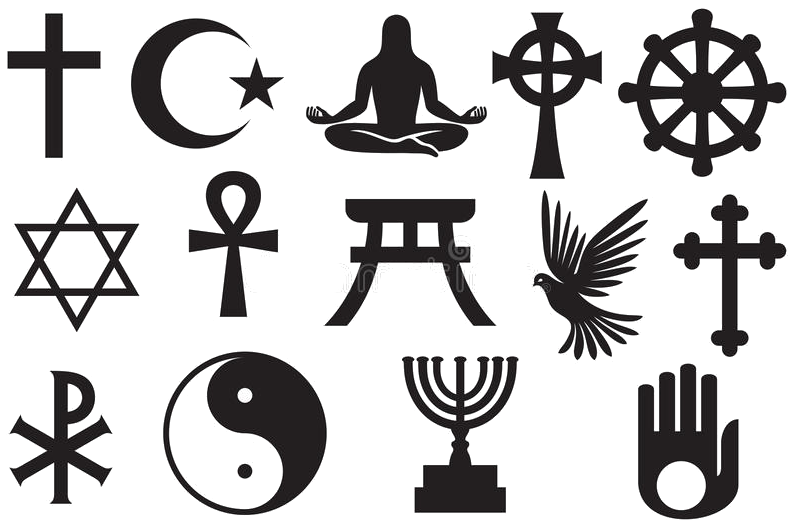 Religion
Religion
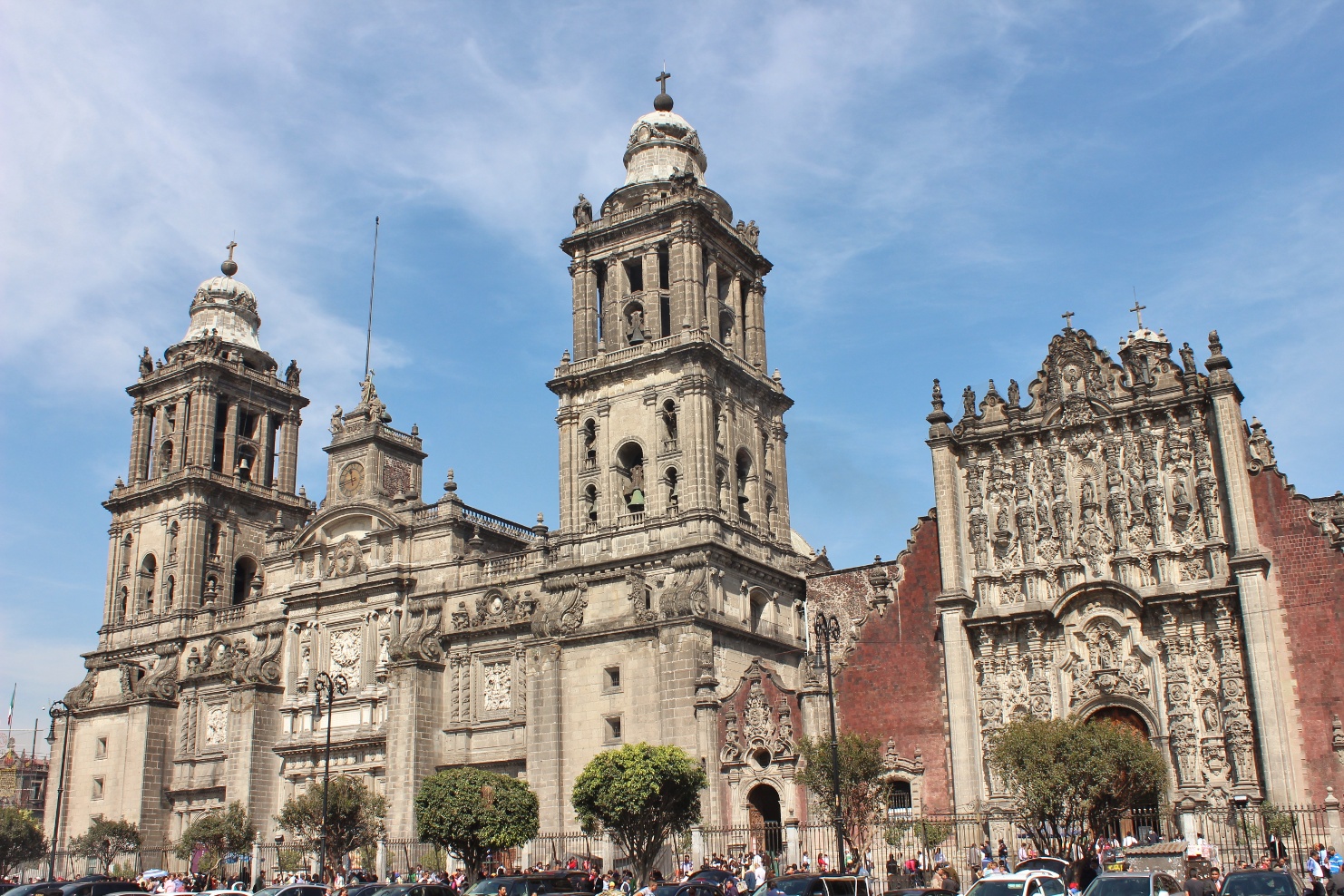

Das DynaTAC 8000X von Motorola war das weltweit erste kommerzielle Mobiltelefon. DynaTAC war die Abkürzung für Dynamic Adaptive Total Area Coverage. Es nutzte den damaligen Mobilfunkstandard AMPS.
Im Jahr 1973 startete bei Motorola unter Martin Cooper[1] und dem Chefdesigner Rudy Krolopp[2] die Entwicklung, die 10 Jahre später in Form des Dynatac 8000X am 21. September 1983 seine FCC-Zulassung erhielt.[3] Es wog 794 g und maß 33 × 4,5 × 8,9 cm. Damals kostete es noch 3.995 US-Dollar (entspricht inflationsbereinigt aktuell 10.870 US-Dollar), bot eine Gesprächsdauer von etwa einer Stunde und konnte 30 Nummern speichern.[4] Dennoch hatten schon ein Jahr später (1984) 300.000 Menschen den Urvater des modernen Mobiltelefons. Ein ähnliches Modell ist das als „Knochen“ bekannte Motorola International 3200.

木户孝允 (日语:木戸 孝允/きど たかよし Kido Takayoshi;1833年8月11日—1877年5月26日),为幕末到明治时代初期活跃的武士、政治家。位阶勋等为赠从一位勋一等。木户孝允本姓和田,后过继桂家为养子,名为桂小五郎,幕末时期以“长州藩的桂小五郎”之名闻名日本,为尊王攘夷派中心人物。而后因受幕府通缉,长州藩主毛利敬亲赐姓木户,更名木户孝允,维新后分别担任总裁局顾问、参与、外国官副知事、待诏院出仕、参议(明治3年6月至7年5月)、特命全权副使、文部卿(明治7年1月至同年5月)、兼内务卿、再度担任参议(明治8年3月至9年3月)、宫内省出仕、内阁顾问等职务,为长州阀之统帅代表者。与萨摩的西乡隆盛、大久保利通一起被并称为维新三杰[1],同时也是维新十杰之一。其妹妹之孙子是政治家木户幸一。
Kido Takayoshi (japanisch 木戸 孝允; * 11. August 1833[Anm 2] in Hagi; † 26. Mai 1877), aus dem Lehen (Han) Chōshū stammend, gehörte mit Saigō Takamori und Ōkubo Toshimichi zu den „Drei Großen der Meiji-Restauration“ (維新の三傑, Ishin no Sanketsu).

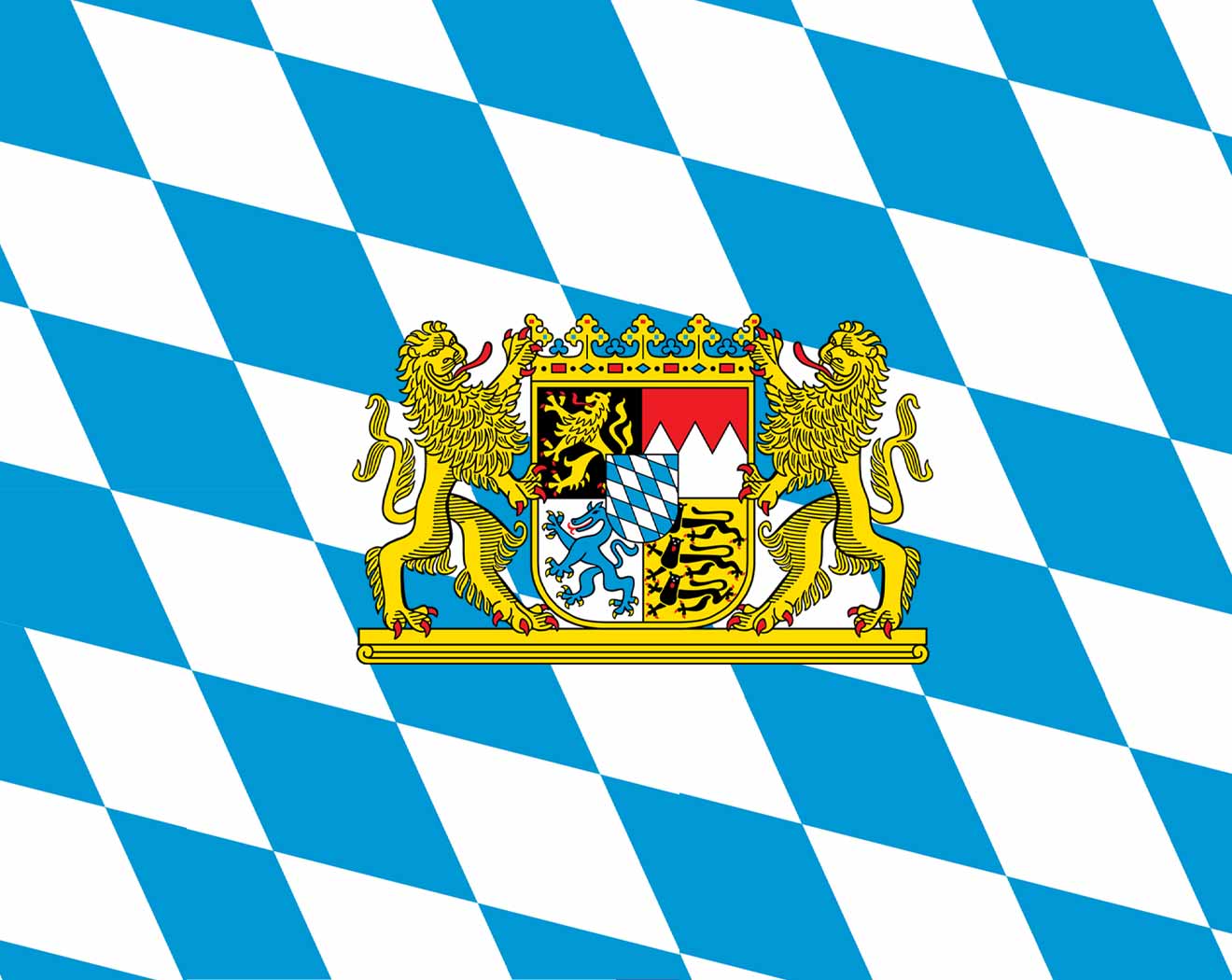 Bavaria
Bavaria
 Germany
Germany
 Eurovision Song Contest,ESC
Eurovision Song Contest,ESC
 FIFA Fussball-Weltmeisterschaft 2006
FIFA Fussball-Weltmeisterschaft 2006
 UEFA European Championship 2020
UEFA European Championship 2020

 UEFA European Championship 2024
UEFA European Championship 2024

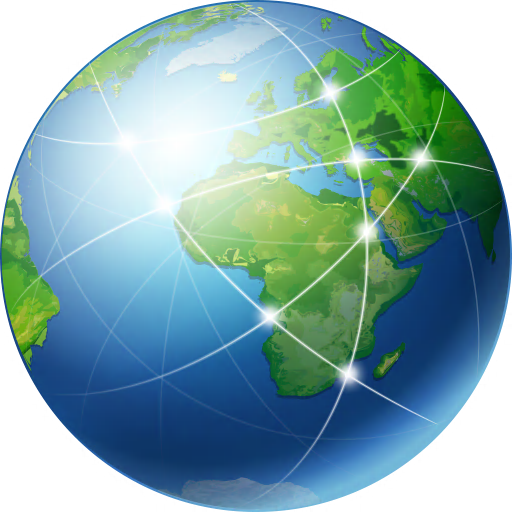 Geography
Geography

 Geography
Geography
 *World's Most Livable Cities
*World's Most Livable Cities

 History
History
 M 1500 - 2000 AD
M 1500 - 2000 AD

 History
History
 L 1000 - 1500 AD
L 1000 - 1500 AD

 History
History
 N 2000 - 2100 AD
N 2000 - 2100 AD

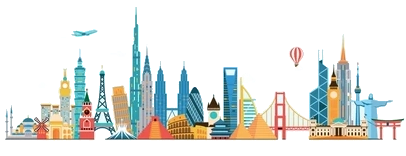 International cities
International cities
 ***Global Urban Economic Competitiveness
***Global Urban Economic Competitiveness
 Olympic Summer Games
Olympic Summer Games
 1972 Summer Olympics
1972 Summer Olympics
 Silk road
Silk road
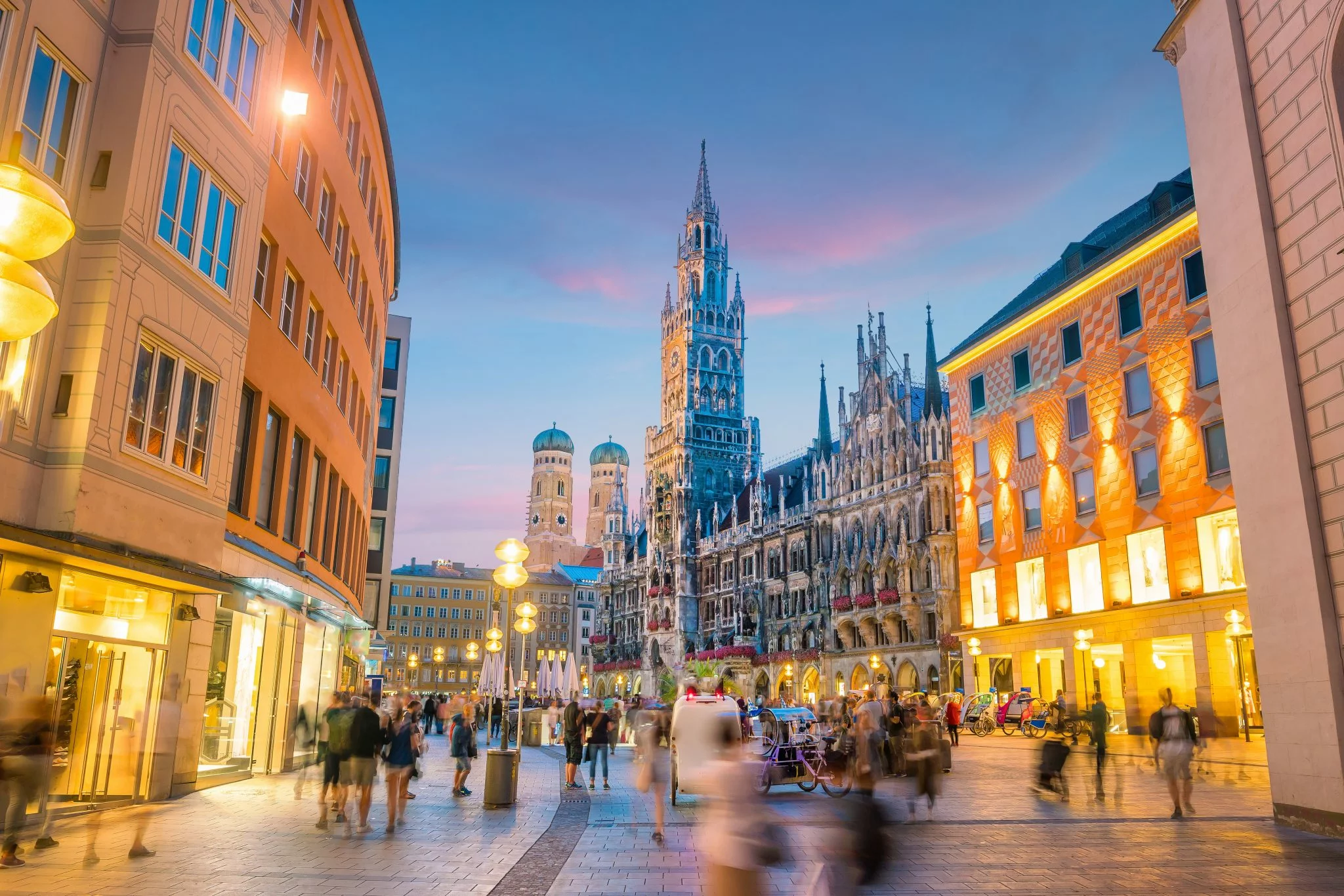
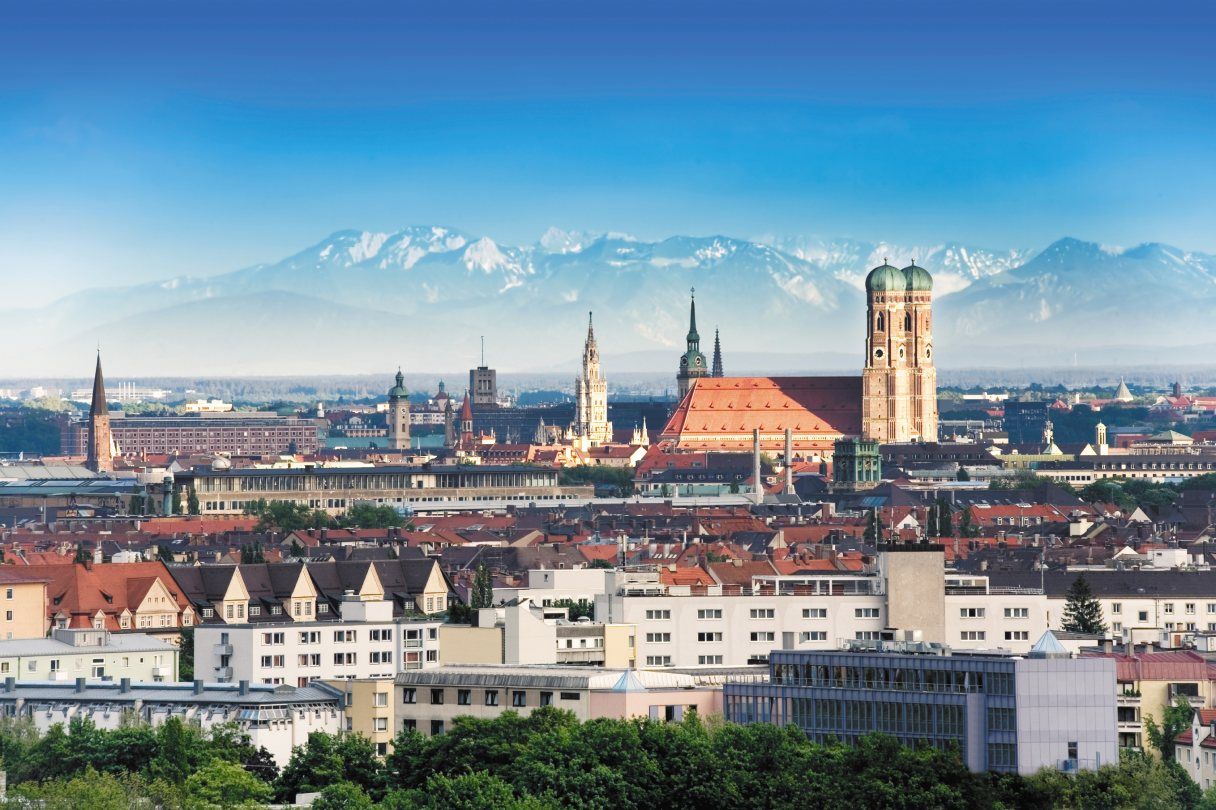
München (hochdeutsch  [ˈmʏnçn̩] oder [ˈmʏnçən̩];[4] bairisch
[ˈmʏnçn̩] oder [ˈmʏnçən̩];[4] bairisch  Minga?/i [ˈmɪŋ(:)ɐ]) ist die Landeshauptstadt des Freistaates Bayern. Sie ist mit rund 1,5 Millionen Einwohnern die einwohnerstärkste Stadt Bayerns und (nach Berlin und Hamburg) die nach Einwohnern drittgrößte Gemeinde Deutschlands sowie die viertgrößte Stadt im deutschsprachigen Raum und zwölftgrößte der Europäischen Union. Im Ballungsraum München leben mehr als 2,9 Millionen Menschen,[5][6] die flächengrößere europäische Metropolregion München umfasst rund 5,7 Millionen Einwohner.
Minga?/i [ˈmɪŋ(:)ɐ]) ist die Landeshauptstadt des Freistaates Bayern. Sie ist mit rund 1,5 Millionen Einwohnern die einwohnerstärkste Stadt Bayerns und (nach Berlin und Hamburg) die nach Einwohnern drittgrößte Gemeinde Deutschlands sowie die viertgrößte Stadt im deutschsprachigen Raum und zwölftgrößte der Europäischen Union. Im Ballungsraum München leben mehr als 2,9 Millionen Menschen,[5][6] die flächengrößere europäische Metropolregion München umfasst rund 5,7 Millionen Einwohner.
Die Landeshauptstadt ist eine kreisfreie Stadt und bayerische Metropole,[7] zudem Verwaltungssitz des die Stadt umgebenden gleichnamigen Landkreises mit dem Landratsamt München als Verwaltung, des Bezirks Oberbayern und des Regierungsbezirks Oberbayern.
München wird zu den Weltstädten gezählt.[8] Die Metropole ist eine der wirtschaftlich erfolgreichsten und am schnellsten wachsenden Europas. Sie ist Sitz zahlreicher Konzerne, darunter fünf DAX-Unternehmen (Allianz, BMW, Linde, Munich Re, Siemens). Hier befindet sich die einzige Börse Bayerns. In der Städteplatzierung des Beratungsunternehmens Mercer belegte München im Jahr 2018 unter 231 Großstädten weltweit den dritten Platz nach Lebensqualität.[9] Laut dem Magazin Monocle war es 2018 sogar die lebenswerteste Stadt der Welt.[10] Andererseits wird die Lebensqualität zunehmend durch Agglomerationsnachteile, wie Verkehrs- und Umweltbelastung sowie sehr hohe Wohneigentumspreise und Mieten[11][12] eingeschränkt, weshalb auch die Wohnfläche pro Einwohner weit unter dem Bundesdurchschnitt liegt.[13] München gilt als sicherste Kommune unter den deutschen Großstädten über 200.000 Einwohnern hinsichtlich der Kriminalitätsrate aller Straftaten.[14]
München wurde 1158 erstmals urkundlich erwähnt.[15] Die Stadt wurde 1255 bayerischer Herzogssitz, war von 1328 bis 1347 kaiserliche Residenzstadt und wurde 1506 alleinige Hauptstadt Bayerns. München ist Sitz zahlreicher nationaler und internationaler Behörden sowie wichtiger Universitäten und Hochschulen, bedeutender Museen und Theater. Durch eine große Anzahl sehenswerter Bauten samt geschützten Baudenkmälern und Ensembles, internationaler Sportveranstaltungen, Messen und Kongresse sowie das weltbekannte Oktoberfest ist München ein Anziehungspunkt für den internationalen Tourismus.
In der Städteplatzierung des Beratungsunternehmens Mercer belegte München im Jahr 2012 unter fünfzig Großstädten weltweit nach Infrastruktur den zweiten und nach Lebensqualität den vierten Platz.
慕尼黑位于德国南部阿尔卑斯山北麓的伊萨尔河畔,是德国南部第一大城,全德国第三大城市,仅次于首都柏林与北部最大城市汉堡。是德国主要的经济、文化、科技和交通中心之一,也是欧洲最繁荣的城市之一。慕尼黑同时又保留着原巴伐利亚王国都城的古朴风情,被人们称作“百万人的村庄”,是生物工程学、软件及服务业的中心。拥有各大公司的总部和许多跨国公司的欧洲总部。
慕尼黑是德国第二大金融中心(仅次于法兰克福),慕尼黑是欧洲最大的出版中心,拥有德国最大的日报之一《南德意志报》,以及许多出版社(仅次于纽约市)。
慕尼黑(德语:München)是德国巴伐利亚州的首府。慕尼黑分为老城与新城两部分,总面积达310平方千米。它是德国南部第一大城,全德国第三大城市,排在柏林与汉堡之后,总人口约130万,有“百万人的村落”的美称。慕尼黑位于德国南部,是巴伐利亚州的文化中心兼首府。它享有“欧洲建筑博物馆”的美誉,哥特式、古罗马式、巴洛克式古建筑以及各式现代化的建筑比比皆是,圣母教堂、路德维希大街是这座城市不可遗忘的部分。自中世纪起,慕尼黑就以啤酒而闻名。是世界第三大啤酒生产地。一年一度的啤酒节让整个城市都沉浸在欢乐的气氛中。这里还是高科技产业中心,宝马、西门子等世界性的大企业总公司就设在慕尼黑。慕尼黑工科大学的科研开发堪称世界一流 。
ミュンヘン(ドイツ語: München, ドイツ語発音: [ˈmʏnçən] (![]() 音声ファイル)[2], バイエルン語: Minga)は、イーザル川河畔にありバイエルンアルプスの北側に位置する都市。ドイツの連邦州であるバイエルン州最大の都市であり、同州の州都でもある。
音声ファイル)[2], バイエルン語: Minga)は、イーザル川河畔にありバイエルンアルプスの北側に位置する都市。ドイツの連邦州であるバイエルン州最大の都市であり、同州の州都でもある。
ミュンヘン(標準ドイツ語:München, バイエルン語:Minga〔ミンガ〕、ミュンヘン方言:Münchn〔ミュンヒン〕)という名は僧院という意味で、ドイツ語で僧を表す「メンヒ」に由来する。漢字表記は「民顕」。"che" の部分の無声硬口蓋摩擦音 [ç] の音写を表すために、[hə]/[xə] の発音を示す「ヘ」ではなく、[çə] の発音を示す「ヒェ」を用い、「ミュンヒェン」とも表記される(こちらのほうがドイツ語の発音に近い)。また "Mü" の発音は正確には「ミュ」ではなく、[mʏ] であり、[ʊ] の形に唇を開き、[ɪ] と発音した音に近い。同じ上部ドイツ語に属するアレマン語では、Münche(ミュンヒェ/ミュンキェ)と発音される。英語やフランス語では Munich(英語:ミューニック[mjú:nik]/仏語:ミュニク[mynik])、イタリア語では Monaco(モナコ公国との区別のために、「バイエルンの」という意味の語をつけてMonaco di Baviera, モナコ・ディ・バヴィエラ)と呼ばれる。
ミュンヘンはベルリン、ハンブルクに次いでドイツでは3番目に大きな都市で、市域人口は140万人近くに達する。1972年にミュンヘンオリンピックが開催された。
ミュンヘンの標語は「ミュンヘンはあなたを愛している。」 "München mag Dich" だが、2006年以前は "Weltstadt mit Herz" 「心を持つ国際都市」であった。ミュンヘンの市章には地名の由来となった僧が表現され、黒と金の配色の市旗は神聖ローマ帝国の色で市の公式の色としてルートヴィヒ4世の時代以来使われている。
今日のミュンヘンは金融、出版の中心都市でたびたび、移住者などが住むのに適した場所として上位に位置付けられる。2011年のマーサー・ヒューマン・リソース・コンサルティングによる世界で最も居住に適した都市では4位を獲得した[3]。2010年のライフスタイルマガジンMonocleの調査では5位に付けており、未だにドイツの都市の中では高い位置にある[4]。経済的、社会的革新に関する162の指標の分析を基にした調査では2thinknowイノベーション都市指数で289都市中、世界では15位、ドイツ国内では5位に付けた[5]。
Munich (/ˈmjuːnɪk/; German: München [ˈmʏnçn̩] ( listen);[2] Austro-Bavarian: Minga [ˈmɪŋ(ː)ɐ]) is the capital and the most populated city in the German state of Bavaria, on the banks of the River Isar north of the Bavarian Alps. Munich is also the third largest city in Germany, after Berlin and Hamburg, and the 12th largest city in the European Union, with a population of around 1.5 million.[3] The Munich Metropolitan Region is home to 6 million people.[4]
listen);[2] Austro-Bavarian: Minga [ˈmɪŋ(ː)ɐ]) is the capital and the most populated city in the German state of Bavaria, on the banks of the River Isar north of the Bavarian Alps. Munich is also the third largest city in Germany, after Berlin and Hamburg, and the 12th largest city in the European Union, with a population of around 1.5 million.[3] The Munich Metropolitan Region is home to 6 million people.[4]
The city is a major centre of art, technology, finance, publishing, culture, innovation, education, business, and tourism in Germany and Europe and enjoys a very high standard and quality of living, reaching first in Germany and third worldwide according to the 2018 Mercer survey,[5] and being rated the world's most liveable city by the Monocle's Quality of Life Survey 2018.[6] According to the Globalization and World Rankings Research Institute Munich is considered an alpha-world city, as of 2015.[7]
The name of the city is derived from the Old/Middle High German term Munichen, meaning "by the monks". It derives from the monks of the Benedictine order, who ran a monastery at the place that was later to become the Old Town of Munich; hence the monk depicted on the city's coat of arms. Munich was first mentioned in 1158. Catholic Munich strongly resisted the Counter-Reformation and was a political point of divergence during the resulting Thirty Years' War, but remained physically untouched despite an occupation by the Protestant Swedes.[8][citation needed] Once Bavaria was established as a sovereign kingdom in 1806, it became a major European centre of arts, architecture, culture and science. In 1918, during the German Revolution, the ruling house of Wittelsbach, which had governed Bavaria since 1180, was forced to abdicate in Munich and a short-lived socialist republic was declared.
In the 1920s, Munich became home to several political factions, among them the NSDAP. The first attempt of the Nazi movement to take over the German government in 1923 with the Beer Hall Putsch was stopped by the Bavarian police in Munich with gunfire. After the Nazis' rise to power, Munich was declared their "Capital of the Movement". During World War II, Munich was heavily bombed and more than 50% of the entire city and up to 90% of the historic centre were destroyed. After the end of postwar American occupation in 1949, there was a great increase in population and economic power during the years of Wirtschaftswunder, or "economic miracle". Unlike many other German cities which were heavily bombed, Munich restored most of its traditional cityscape and hosted the 1972 Summer Olympics. The 1980s brought strong economic growth, high-tech industries and scientific institutions, and population growth. The city is home to major corporations like BMW, Siemens, MAN, Linde, Allianz and MunichRE.
Munich is home to many universities, museums and theatres. Its numerous architectural attractions, sports events, exhibitions and its annual Oktoberfest attract considerable tourism.[9] Munich is one of the most prosperous and fastest growing cities in Germany. It is a top-ranked destination for migration and expatriate location, despite being the municipality with the highest population density in Germany (4,500 people per km²) . Munich hosts more than 530,000 people of foreign background, making up 37.7% of its population.[10]
Munich (/my.nik/) (München en allemand, prononcé : [ˈmʏnçən] Écouter ; Minga en bavarois) est une ville du sud de l'Allemagne et la capitale du Land de Bavière. Avec 1 548 319 habitants intra-muros au 30 juin 20171 et 2 351 706 habitants dans son aire urbaine2, elle est la troisième ville d'Allemagne par la population après Berlin et Hambourg. La Région métropolitaine de Munich, qui englobe également Augsbourg et Ingolstadt, compte quant à elle plus de cinq millions d'habitants. Traversée par l'Isar, affluent du Danube, elle se situe dans le district de Haute-Bavière, au pied des Alpes bavaroises.
Le nom de la ville provient du vieux haut-allemand Munichen (« par les moines »), en raison de la présence d'un monastère bénédictin à l'emplacement actuel de la vieille ville ; l'héraldique fait par ailleurs figurer un moine. Mentionnée pour la première fois en 1158, Munich devient la ville de résidence des ducs de Bavière en 1255 et de l'empereur romain germanique Louis IV. En 1506, après deux siècles de division, les principautés s'unifient pour former la Bavière. Ville catholique - ce dont témoigne la cathédrale Notre-Dame, principal édifice religieux de la ville -, elle est l'un des foyers de la Contre-Réforme. Devenue capitale de l'électorat de Bavière (1623) puis du royaume de Bavière (1805), elle devient un des principaux centres culturels, artistiques et scientifiques allemands au XIXe siècle, sous l'impulsion du roi Louis II.
Au cours du XXe siècle, Munich connaît un important développement industriel, devenant le premier pôle économique de la République fédérale allemande (1949-1990) puis de l'Allemagne réunifiée. Elle accueille notamment le siège de grandes sociétés comme Siemens, Allianz, BMW, Münchener Rückversicherung, Linde, Airbus Deutschland et HypoVereinsbank. Selon Eurostat, la zone urbaine élargie de la région métropolitaine de Munich est la plus importante d'Allemagne en termes de PIB avec 117,6 milliards d'euros, devant Hambourg, Berlin et Francfort. Avec un PIB par habitant de 53 073 euros, Munich est également l'une des villes les plus riches de l'Union européenne2.
Deuxième destination touristique d'Allemagne après Berlin, Munich est célèbre pour sa traditionnelle fête de la bière, l'Oktoberfest, qui se déroule chaque année de fin septembre à début octobre. Outre la cathédrale, la ville a également un important patrimoine historique, composé notamment du château de Nymphenbourg, de très nombreux musées richement dotés et de deux vastes jardins, le Hofgarten et le Englischer Garten (jardin anglais). Réputée être l'une des villes les plus agréables à vivre au monde, Munich accueille de nombreux évènements internationaux, dont les Jeux olympiques d'été de 1972, qui furent le théâtre d'une sanglante prise d'otages. Enfin, elle est le lieu de résidence de l'un des principaux clubs de football d'Europe, le Bayern Munich, qui joue dans l'Allianz Arena, au nord du centre-ville.
Monaco di Baviera (/ˈmɔnako di baˈvjɛra/; in tedesco: München, /ˈmʏnçən/, ascolta[?·info]; in bavarese: Minga) è una città extracircondariale della Germania meridionale, capitale (Landeshauptstadt) della Baviera. Situata sulle rive del fiume Isar, dopo Berlino ed Amburgo è la terza città tedesca per numero di abitanti[2], con una popolazione di circa 1 528 849 (30-04-2016) residenti nel comune,[3] 1 808 550 se si considera anche il circondario di Monaco e circa 2,7 milioni nell'area metropolitana.
È la città più importante della Germania meridionale, grazie alle residenze reali, agli immensi parchi, ai suoi musei, alle sue chiese barocche e rococò, al folclore bavarese ancora molto vissuto, alla vicinanza delle Prealpi e delle Alpi e naturalmente grazie alla birra ed alla sua manifestazione più famosa, l'Oktoberfest. Il santo patrono della città è San Benno di Meißen. Nel 2015[4] uno studio della società di consulenza globale Mercer ha classificato Monaco di Baviera al quarto posto tra le 20 città del mondo con la miglior qualità della vita; nel 2016[5] la città mantiene la sua posizione.
Múnich2 (AFI: ['mu.nitʃ], también [ˈmu.nik];3 en alemán, München,  [ˈmʏnçən] (?·i); en austro-bávaro: Minga [ˈmɪŋ(ː)ɐ]) es la capital, la mayor y la más importante ciudad del estado federado de Baviera y,4 después de Berlín y Hamburgo, la tercera ciudad de Alemania por número de habitantes. Se encuentra sobre el río Isar, al norte de los Alpes Bávaros.
[ˈmʏnçən] (?·i); en austro-bávaro: Minga [ˈmɪŋ(ː)ɐ]) es la capital, la mayor y la más importante ciudad del estado federado de Baviera y,4 después de Berlín y Hamburgo, la tercera ciudad de Alemania por número de habitantes. Se encuentra sobre el río Isar, al norte de los Alpes Bávaros.
El lema de la ciudad es München mag Dich (A Múnich le gustas). Antes de 2006 era Weltstadt mit Herz (Ciudad cosmopolita con corazón). Su nombre, München, deriva de Munichen, del alto alemán antiguo, que significa «en el lugar de los monjes». El nombre de la ciudad viene de los monjes benedictinos que fundaron la ciudad; de ahí que en el escudo de la ciudad haya un monje. Los colores oficiales de la ciudad son el negro y el oro, colores del Sacro Imperio Romano Germánico, desde tiempos de Luis IV de Baviera.
El área metropolitana de Múnich incluye algunas localidades colindantes de esta ciudad. Según un estudio de 2009, Múnich es la ciudad con la mejor calidad de vida de Alemania.5
El Múnich moderno es un centro financiero y editorial. En cuanto a innovación social y económica, la ciudad se encuentra en el 15.º lugar entre 289 ciudades según un estudio de 2010, y es la quinta ciudad alemana para el 2thinknow Innovation Cities Index basado en un análisis de 162 indicadores.6
El exónimo en español de la ciudad, que posee la particularidad de contar con una «ch» final, algo ajeno al sistema fonológico español, nace de los exónimos en francés e inglés. Por tanto, la pronunciación del exónimo es, etimológicamente, [ˈmunik], a través de la pronunciación del exónimo en inglés, o ['munitʃ], siguiendo las normas de pronunciación habituales del español. El gentilicio es «muniqués» y su plural, «muniqueses». El Diccionario Panhispánico de Dudas desaconseja la pronunciación con diptongo [ˈmiunik], propia del inglés.7 Múnich fue sede de los Juegos Olímpicos de 1972.
Мю́нхен (нем. München [ˈmʏnçən], бав. Minga, лат. Monacum, Monachium) — город на реке Изаре, на юге Германии, в федеральной земле Бавария. Внерайонный город (нем. kreisfreie Stadt), одновременно являющийся административным центром Баварии и административного округа Верхняя Бавария.
Название города произошло от древневерхненемецкого Munichen — «у монахов».
Население Мюнхена — 1 542 886 человек (31 октября 2016)[6]. Таким образом, он является крупнейшим городом Баварии и третьим, после Берлина и Гамбурга, городом Германии. В Мюнхене находится правительство Баварии, правительство округа Верхняя Бавария, а также правительство мюнхенского городского округа.
Мюнхен славится своими пивоваренными традициями. В городе находятся шесть крупных пивоварен, которые снабжают пивом знаменитый на весь мир Октоберфест — праздник пива, кренделей, жареных курочек и каруселей, ежегодно проводящийся в конце сентября — начале октября на Терезином лугу.
Современный Мюнхен — не только сосредоточие культурных и музейных ценностей, но и крупный промышленный и исследовательский центр. Благодаря знаменитым университетам, одной из крупнейших в Европе Баварской государственной библиотеке, насчитывающей шесть миллионов томов, институтам имени Макса Планка и имени Хайнца Майера-Лейбница, ядерному научно-исследовательскому реактору и многим другим учреждениям Мюнхен удерживает прочные позиции в европейской науке. Также Мюнхен по праву считается ИТ-столицей Германии. Недвижимость в Мюнхене самая дорогая в Германии.[7]

穆斯塔法·凯末尔·阿塔图尔克(土耳其语:Mustafa Kemal Atatürk,1881年5月19日-1938年11月10日)是土耳其的军官、改革家、作家和领导人,土耳其共和国第一任总统、总理及国民议会议长[1],被誉为现代土耳其的肇建者。生于萨洛尼卡(今希腊境内),木商家庭出身。1934年11月24日,土耳其国会向凯末尔赐予“Atatürk”一姓[1],在土耳其语“Ata”就是父亲,“Atatürk”(阿塔图尔克)就是“土耳其人之父”之意。中文学术界在论述时习惯上仍称为凯末尔[2]。
凯末尔最为人所知是他在一战杰出的军事能力,同时伴随着奥斯曼帝国的崩解,他带领土耳其国民运动并成功在安卡拉建立独立政府,他打败当时协约国所带领的同盟军队,并以杰出的优越能力解放了国家并建立了现今的土耳其共和国,在他就任土耳其领导人的时候,凯末尔进行一连串政治,经济和文化上的变革,启蒙土耳其并让土耳其成为现代化和世俗主义的国家,凯末尔带领土耳其现代化的作为被称为凯末尔主义,其中也包括减少伊斯兰教对政治及教育的影响[3]。
Kemal Atatürk[1] (bis 1934: Mustafa Kemal Pascha, osmanisch مصطفى كمال پاشا Muṣṭafâ Kemâl Paşa; von 1935 bis 1937: Kamâl Atatürk;[2][3] * 1881 in Selânik, Osmanisches Reich; † 10. November 1938 in Istanbul, Türkei), auch als Mustafa Kemal Atatürk bezeichnet, war der Begründer der Republik Türkei und von 1923 bis 1938 erster Präsident der nach dem Ersten Weltkrieg aus dem Osmanischen Reich hervorgegangenen modernen Republik.




 Nelson Mandela
Nelson Mandela
 Nobel prize
Nobel prize
 1993
1993
 Nobel prize
Nobel prize
 Nobel prize
Nobel prize
 Nobel Peace Prize
Nobel Peace Prize
 President or Chairman
President or Chairman
 South Africa
South Africa

Nelson Rolihlahla Mandela [nelsɒn xoˈliɬaɬa manˈdeːla] (* 18. Juli 1918 in Mvezo, Transkei; † 5. Dezember 2013 in Johannesburg), in Südafrika häufig mit dem traditionellen Clannamen Madiba bezeichnet, oft auch Tata genannt (isiXhosa für „Vater“), Initiationsname Dalibunga,[1][2] war ein südafrikanischer Aktivist und Politiker im Jahrzehnte andauernden Widerstand gegen die Apartheid und von 1994 bis 1999 der erste schwarze Präsident seines Landes. Ab 1944 engagierte er sich im African National Congress (ANC). Aufgrund seiner Aktivitäten gegen die Apartheidpolitik in seiner Heimat musste Mandela von 1963 bis 1990 insgesamt 27 Jahre als politischer Gefangener in Haft verbringen. Mandela war ein führender und herausragender Vertreter im Freiheitskampf gegen Unterdrückung und soziale Ungerechtigkeit.[3] Er war der wichtigste Wegbereiter des versöhnlichen Übergangs von der Apartheid zu einem gleichheitsorientierten, demokratischen Staatswesen in Südafrika. 1993 erhielt er deshalb den Friedensnobelpreis. Bereits zu Lebzeiten wurde Mandela für viele Menschen weltweit zum politischen und moralischen Vorbild. Er gilt als großer afrikanischer Staatsmann im 20. Jahrhundert.
纳尔逊·罗利拉拉·曼德拉(科萨语:Nelson Rolihlahla Mandela;1918年7月18日—2013年12月5日[1]),特兰斯凯人,南非反种族隔离活动家、政治家,曾担任非国大主席、南非总统与不结盟运动秘书长。
出生于酋长家庭的曼德拉是积极的反种族隔离人士,任非洲人国民大会武装组织民族之矛领袖。当曼德拉领导反种族隔离运动时,南非法院曾判处他“密谋推翻政府”等罪名,曼德拉前后共服刑26年半,其中有约13年在罗本岛的监狱度过。1990年3月14日出狱后,曼德拉领导调解与协商,并在推动多元族群民主的过渡期挺身领导南非[2][3]。自种族隔离制度终结以来,曼德拉受到了来自各界的赞许,包括从前的反对者。曼德拉在40年来获得了超过一百项奖项,其中最显著的便是1993年的诺贝尔和平奖。
1994年至1999年间,曼德勒担任南非总统,是第一个由全面代议制民主选举选出的南非元首。他任内致力于废除种族隔离制度、实现种族和解,以及消除贫困不公。作为非洲国家主义者和民主社会主义者,他在1991年至1997年间任非洲人国民大会主席,1998年至1999年间任不结盟运动秘书长。
2013年6月,曼德拉因肺部感染而病危,在住院86天后于9月出院回到约翰内斯堡的家中,并过了95岁的生日。同年12月5日,南非总统雅各布·祖玛宣布,长期苦于肾脏感染的前总统曼德拉在当天于家中病逝,享寿95岁。[1][4][5]
由于曼德拉的功绩,他被广泛视作南非的国父[6]。2005年,南非广播公司举办了“最伟大的南非人”票选活动,结果曼德拉被选为最伟大的南非人。他作为南非政界元老,持续对时事话题发表他的见解。在南非,他普遍被昵称为马迪巴(Madiba),这是曼德拉家族中长辈对他的荣誉头衔[7],而此称谓也变成了曼德拉的同义词。

Aus korsischer Familie stammend, stieg Bonaparte während der Französischen Revolution in der Armee auf. Er erwies sich als militärisches Talent ersten Ranges. Vor allem die Feldzüge in Italien und in Ägypten machten ihn populär. Dies ermöglichte ihm, durch den Staatsstreich des 18. Brumaire VIII (9. November 1799), zunächst als einer von drei Konsuln, die Macht in Frankreich zu übernehmen. Während des Konsulats von 1799 bis 1804 und des Ersten Kaiserreichs von 1804 bis 1814 sowie nochmals 1815 stand er einem diktatorischen Regime mit plebiszitären Elementen vor.
Durch verschiedene Reformen – etwa die der Justiz durch den Code civil oder die der Verwaltung – hat Napoleon die staatlichen Strukturen Frankreichs bis in die Gegenwart hinein geprägt und die Schaffung eines modernen Zivilrechts in besetzten europäischen Staaten initiiert. Außenpolitisch errang er, gestützt auf die Armee, zeitweise die Herrschaft über weite Teile Kontinentaleuropas. Im Königreich Italien trat er selbst an die Staatsspitze, in anderen Ländern setzte er Familienmitglieder und Vertraute als Monarchen ein. Während es ihm gelang, zeitweise auch Preußen und Österreich in sein Bündnissystem zu zwingen, brachte ihn seine Hegemonialpolitik in einen dauerhaften Konflikt mit Großbritannien und Russland. Durch die von ihm eingeleitete Auflösung des Heiligen Römischen Reiches 1806 wurde die staatliche Gestaltung Mitteleuropas zu einer zentralen Frage im 19. Jahrhundert. Während er den Nationalstaatsgedanken anfangs selbst noch außerhalb Frankreichs verbreitet hatte, erschwerte gerade dessen Erfolg, insbesondere in Spanien, Deutschland und Russland, die Konsolidierung der napoleonischen Ordnung in Europa.
Auf den für Frankreich katastrophalen Ausgang des Russlandfeldzugs von 1812 folgten die Befreiungskriege, die Erschütterung der französischen Vorherrschaft in Europa und 1814 der Sturz Napoleons. Nach seiner Verbannung auf die Mittelmeerinsel Elba kehrte er 1815 während der Herrschaft der Hundert Tage noch einmal an die Macht zurück. In der Schlacht bei Waterloo endgültig besiegt, wurde er bis zu seinem Lebensende auf die abgelegene, britisch kontrollierte Atlantikinsel St. Helena verbannt.
拿破仑于1814年退位,随后被流放至厄尔巴岛。1815年建立百日王朝后再度战败于滑铁卢后被流放。1821年5月5日,拿破仑病逝于圣赫勒拿岛。1840年,他的灵柩被迎回法国巴黎,隆重安葬在法国塞纳河畔的巴黎荣军院(巴黎伤残老年军人院)。


 Financial
Financial
 Historical coins, banknotes
Historical coins, banknotes
 Science and technology
Science and technology

 IT-Times
IT-Times
 Review
Review

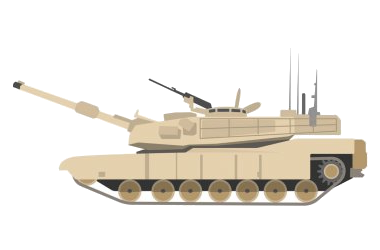

 Military, defense and equipment
Military, defense and equipment
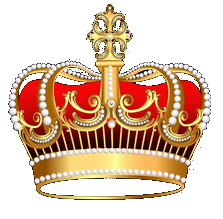 Royalty
Royalty
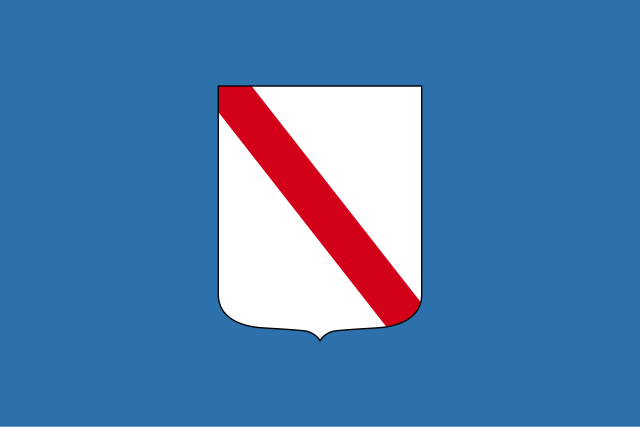 Campania
Campania